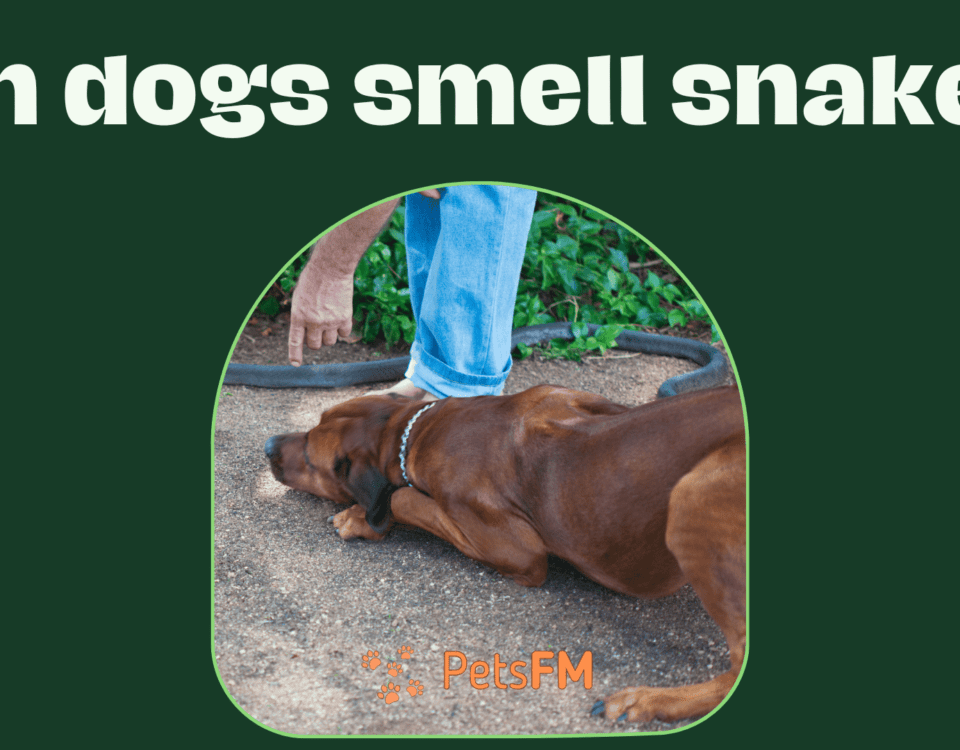


Are Fish Good Pets? 10 Things to Consider Before Getting One
February 18, 2024


150+ Hindi Cat Names (+ Their Meanings)
February 22, 2024When we think about communicating with our dogs, the unique tool that often comes to mind is the dog whistle. Known for its high-pitched sound, undetectable by human ears but perfectly audible to dogs, this device has been a subject of fascination and utility for dog owners and trainers alike.
But have you ever wondered about its impact on our canine companions? How does this seemingly magical tool interact with the sensitive ears of dogs? Do they hurt dogs?
No, dog whistles themselves do not inherently hurt dogs. These devices are designed to emit sounds at frequencies audible to dogs but not humans, making them a useful tool for training and communication. However, the sound from a dog whistle can be annoying or startling to a dog if used too loudly or too frequently, but it does not cause physical pain when used responsibly.
In this post, we’ll talk about dog whistles, exploring their functionality and the science behind how dogs perceive these ultrasonic sounds.
What is a dog whistle? How does it work?
A dog whistle, often called a silent whistle or Galton’s whistle, is a training tool designed to emit sounds at frequencies higher than those audible to the human ear. The mechanics behind a dog whistle lie in its ability to produce ultrasonic waves.
Due to their high frequency, typically between 23,000 and 54,000 Hz, these waves are beyond the range of human hearing, which caps at about 20,000 Hz for children and decreases to around 15,000 Hz or lower in adults.
However, these sounds fall well within the auditory range of dogs, which can hear up to approximately 45,000 Hz and, in some cases, even as high as 65,000 Hz.
The principle of operation for a dog whistle involves the creation of a narrow stream of air forced through a small opening, then cut by a sharp edge, producing the ultrasonic sound.
The design allows for frequency adjustment, making it possible to find a sound that elicits the best response from a specific dog. This adjustability is crucial because, like humans, each dog’s hearing sensitivity varies, and what works for one dog might not be as effective for another.
The range of sounds and frequencies a dog can hear is much more comprehensive than that of humans. This allows dogs to perceive both lower and significantly higher frequencies. This capability is a remains of their wild ancestors’ need to detect prey and predators, often indicated by high-pitched sounds.
Dog whistles exploit this natural sensitivity by emitting noises at frequencies that grab a dog’s attention without causing auditory disturbance to humans.


A dog whistle
Why do people use dog whistles?
People use dog whistles primarily for training and behavior management due to their unique ability to capture a dog’s attention without disturbing the surrounding environment.
These tools are especially effective in:
- Training basic obedience commands: Dog whistles can help teach commands like sit, stay, come, or heel with clarity and consistency.
- Recalling dogs from a distance: The high-pitched sound travels well over long distances, making it ideal for calling dogs back in open spaces.
- Managing behavior without noise: Unlike verbal commands or loud clickers, dog whistles provide a discreet way to communicate with dogs in quiet areas or where noise must be minimal.
- Hunting and sporting activities: Hunters and sports enthusiasts use dog whistles to direct dogs during fieldwork or competitions without alarming the game or disrupting the focus of the animal.
- Training without disturbing others: In urban or crowded settings, dog whistles allow for training sessions that don’t bother neighbors or bystanders.
Must Read: Do’s and Don’ts of Scruffing Your Dog: A Comprehensive Guide
Can dogs feel discomfort from dog whistles?
Yes, dogs can feel discomfort from whistles if used improperly. Dogs have very sensitive hearing and are able to hear much higher frequencies than humans.
The discomfort level depends on several factors:
- Volume and proximity: Loud sounds or using the whistle too close to the dog can be startling or uncomfortable.
- Frequency: Some frequencies may be more irritating to dogs than others.
- Usage frequency: Repeated or constant use can cause stress or anxiety.
- Individual sensitivity: Like people, dogs have individual tolerances to sound.


Dog in discomfort
What are the different types of dog whistles?
Dog whistles come in various types, each designed for specific uses and preferences. The main types include:
- Adjustable Frequency Whistles: These allow the user to change the frequency of the sound emitted. Adjustable whistles are versatile and can be tuned to match the hearing sensitivity of different dogs.
- Fixed Frequency Whistles: These emit sound at a specific, unchangeable frequency. They are simpler than adjustable models and are used when a known frequency works well with a particular dog or group of dogs.
- Silent Whistles: Often referred to as ultrasonic whistles, they emit sound at a frequency above the range of human hearing but within the auditory range of dogs. While not entirely silent, they are much quieter to human ears than to dogs.
- Pea Whistles: These contain a small pea inside the whistle, creating a trilling sound when blown. The varied sounds can be more attention-grabbing for dogs and helpful in training for specific tasks like hunting or sports.
- Pealess Whistles: Without a pea, these whistles produce a consistent, clear tone. They are less likely to freeze in cold weather, making them suitable for outdoor training in various climates.
- Acme Whistles: A brand known for its quality and variety, Acme offers whistles in different frequencies, including those specifically designed for dog training and field trials.
Also Read: Dog walking slowly with head down? [17+ Reasons & Solutions]
Are there alternatives to using a dog whistle?
Yes, several alternatives exist to using a dog whistle for training and behavior management. These tools and techniques offer diverse approaches to communication and training, each with its own effectiveness and safety considerations:
- Clickers: A small device that makes a clicking sound to mark desired behavior. Clickers are effective for positive reinforcement training and are safe for dogs’ ears.
- Verbal Commands: Using voice commands is the most traditional method of dog training. It allows for a wide range of instructions but requires consistent tone and command words.
- Hand Signals: Visual cues can complement verbal commands or serve as a silent method of communication. They are particularly useful for training dogs from a distance or noisy environment.
- Vibration Collars: These collars gently vibrate to get the dog’s attention without using sound. They help train deaf dogs or as a discreet signal in training.
- Treats and Toys: Positive reinforcement with treats, toys, or playtime encourages good behavior. This method is highly effective and safe, promoting a positive association with training.
- Electronic Training Collars: Used to correct behavior with a static shock or a citronella spray. While controversial, when used correctly and humanely, they can be effective. However, they require careful consideration to avoid causing fear or distress.
How to use a dog whistle safely?
Using a dog whistle safely involves being mindful of your dog’s comfort and well-being. Here are tips for responsible use:
- Start with low volume: Begin at a low volume and gradually increase until your dog’s ears perk up, indicating they hear the sound without discomfort.
- Maintain a distance: Don’t use the whistle too close to your dog’s ears to avoid startling them or causing discomfort.
- Use sparingly: Only use the whistle for training or getting your dog’s attention to prevent overuse and potential stress.
- Observe your dog’s reaction: Watch for signs of distress or confusion and adjust your training methods accordingly.
- Combine with positive reinforcement: Pair the whistle with treats or praise to create a positive sound association.
- Consistency is key: Use the whistle consistently for specific commands or cues to avoid confusion and help your dog learn effectively.


Using a dog whistle safely
What does a dog whistle sound like to humans?
To most humans, a dog whistle produces a soft, faint whistle or hissing sound, if audible. The frequency is designed to be at or beyond the upper limit of human hearing, making the whistle’s sound primarily detectable only to dogs.
Editor’s Pick: Why does my dog keep putting its puppy in the mouth? 8 Reasons
Will using a dog whistle make my dog obey better?
A dog whistle alone doesn’t ensure obedience. It serves as a tool for gaining your dog’s attention. Effective use depends on consistent training, positive reinforcement, and establishing clear commands associated with the whistle sound.
Can a dog whistle prevent a dog from barking?
While a dog whistle can momentarily distract a dog from barking, it’s not a magic solution for barking issues. Long-term solutions require understanding the cause of barking and addressing it through training and behavioral modification.
Is it possible to overuse a dog whistle?
Yes, overusing a dog whistle can lead to desensitization, where the dog starts to ignore the whistle, or it can cause anxiety and stress. It is essential to use it sparingly and only as part of a broader training strategy.
Conclusion
In conclusion, dog whistles are valuable tools for communication and training, offering a unique way to capture your dog’s attention without disrupting those around you. This blog emphasizes responsible use, observing your dog’s reactions, and combining the whistle with positive reinforcement techniques.
By balancing effective communication with care for your dog’s well-being, you can harness the benefits of a dog whistle while ensuring a happy and stress-free environment for your furry friend.



